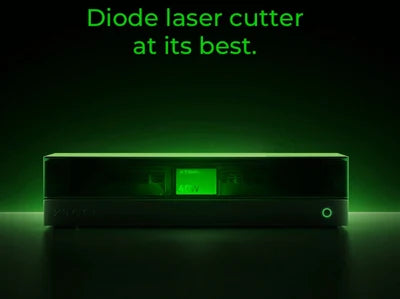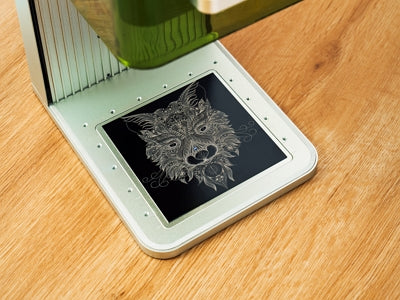Owners of the xTool D1 or D1 Pro series lasers are familiar with the brass cap depicted in the photo. If you peruse the forums you’ll see it referred to by many names. It is probably most commonly referred to as a “Lens”. however, this isn’t technically correct.

The material construction is also confusing and is sometimes referred to as a copper cap or copper ring. In this article we’ll strive to clear up some of the mysteries surrounding this accessory.
Optical Lenses
It is almost never a good idea to expose a lens element directly to the outside environment. On a camera the Lens Group is protected by something called a Front Element.
I spent most of my career working in optics. I was a Field Service Rep in DOD and worked on Aircraft Visual Landing Aids. If you’ve ever seen a movie of a pilot landing on an Aircraft Carrier you’ll hear terms used such as “I’ve got the ball”, and “Roger, ball”. The ball is the optical array of lights on the left side of the carrier. I worked on those systems.
You can imagine they are quite precise and quite expensive. On every landing aid the military uses the optical lens is protected by some sort of front glass or front lens element. This protects the actual optical lens from damage. It also protects the actual lens from improper cleaning. It is almost always considerably cheaper to replace the protective glass rather than the lens. Touching the lens requires focusing operations be performed as well.
And this small, removable accessory found on the xTool D1 series is designed to do EXACTLY the same thing.
xTool Protective Lens Cap
The lens protective cap is a consumable item. It is constructed of brass and contains a piece of quartz glass that measures up to 7 on the Mohs Hardness scale. It is rated for high temperature and thermal shock resistance.

During laser operations there may be times when dust, smoke, or soot comes in contact with the protective glass. During use, those contaminants may distort, discolor, or craze the optical glass surface. In extreme instances the glass itself may crack.
You can see some minor damage to the optical surface in the photo. When the glass becomes sufficiently affected the laser beam may drastically lose efficiency, or create unwanted effects.

*Scorched lens under the microscope
How to Maintain the Lens Cap?
It is important to keep the surface of the optical glass as clean as possible. Many times this distortion can be removed by cleaning. xTool recommends the use of anhydrous ethanol for cleaning. Also optical cleaning cloths should be used. Other fabrics may damage or scratch the quartz surface.
Many users may also find that 91% or higher isopropyl alcohol can be an effective cleaner as well. In many cases the effected area (as depicted in the photo above) can be almost completely removed. Some pressure may need to be applied for thorough cleaning.
If the contaminants or distortion cannot be removed the protective cap should be replaced.
Many other manufacturers do not offer the protective lens cover as a consumable item. If their lens cap glass breaks your machine is down until a warranty replacement is obtained. Fortunately xTool does offer this item as a consumable. The xTool D1 Pro 20 watt kit I received contained one spare cap. Caps can be purchased from the xTool accessory area. Additionally, the xTool parts kit for the D1 series contains a spare cap.
How to Replace it?
Some forum users purchase optical glass from 3rd party sources and replace only the glass in the cap when it becomes damaged. From an economical standpoint it saves money. From an optical standpoint you could be causing issues. Let me tell you another aircraft carrier story.
Our carriers use a landing aid called an IFLOLS. The IFLOLS has protective front lenses. In the late 2010’s the US fitted an IFLOLS on the French Aircraft Carrier and during testing discovered the front lens was distorting the “meatball” image. A check of glass batch numbers indicated that every aircraft carrier in the US Navy had the same distortion. A newly overhauled shore based unit at MCAS Beaufort SC was also affected. Yours truly got to tell the Operations Officer that the $500,000 overhaul he paid for had distorted optics.
Anyway, you will see forum users advocating for cheap, drop in replacement glass. I will not be one of those advocates. Your drop in replacement might be good, heck, it might even be better. BUT IT COULD BE WORSE.
You may also see people suggest that you can use your laser without the cap installed. While that is true you run a very real risk of permanent damage to the actual lens which will mean you would have to replace the entire laser head assembly if this happened.
I strongly recommend to use the authorized xTool replacement protective caps.
Summary
Hopefully we’ve cleared up some of the mystery surrounding the protective lens cap. Its primary function in life is to protect the actual optical lens found in the laser head assembly. It is a consumable item that every D1 series owner should have on hand to prevent downtime.




